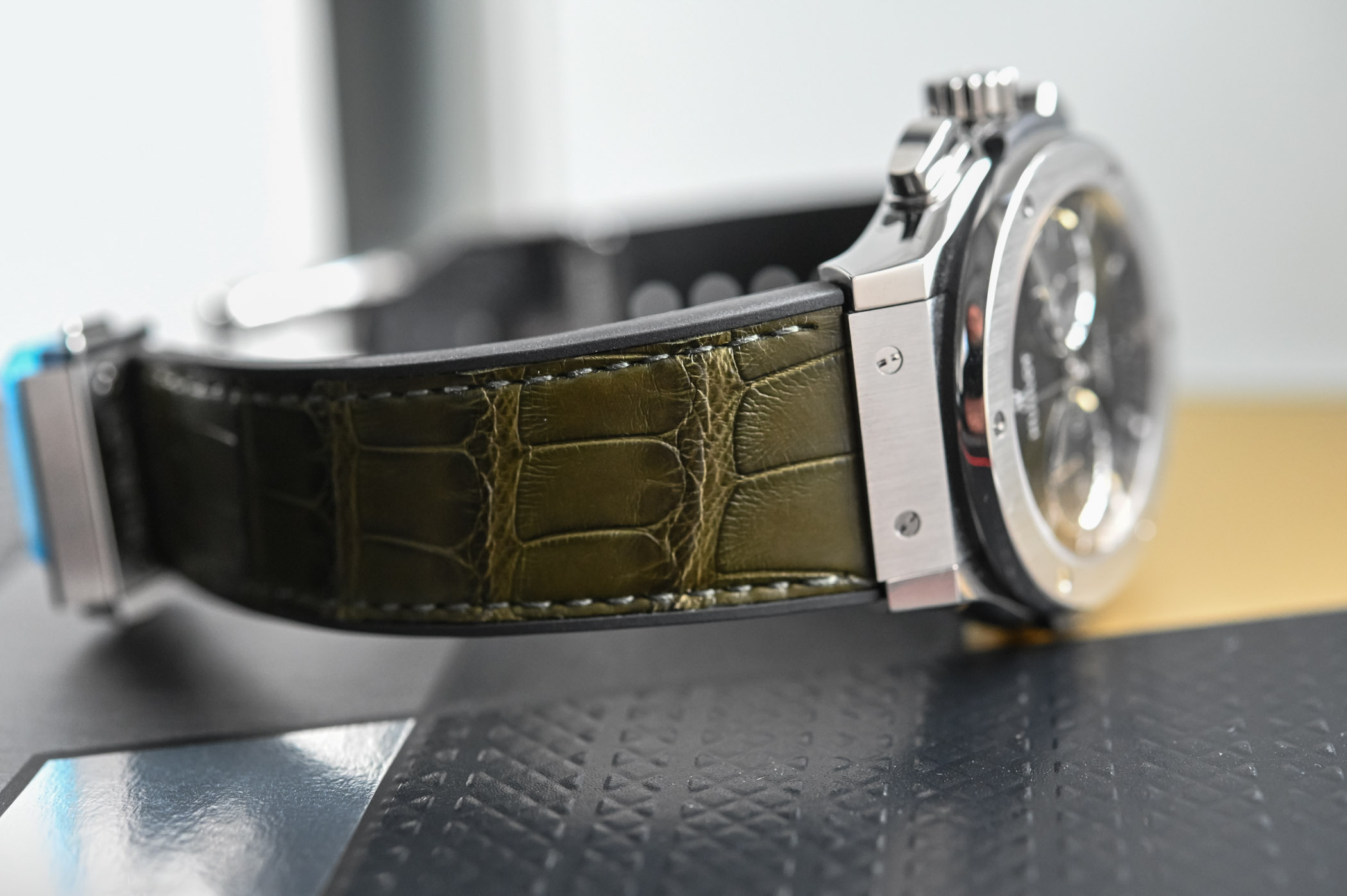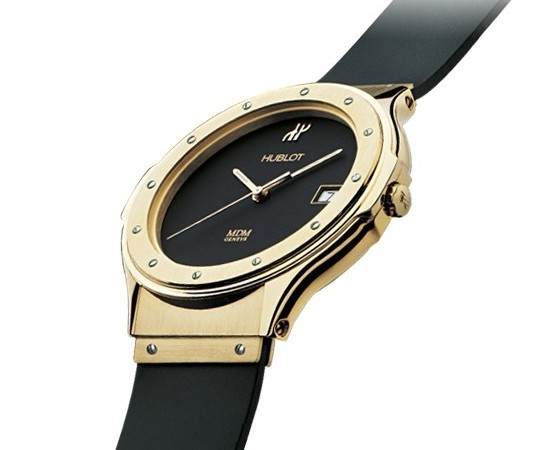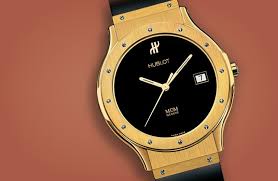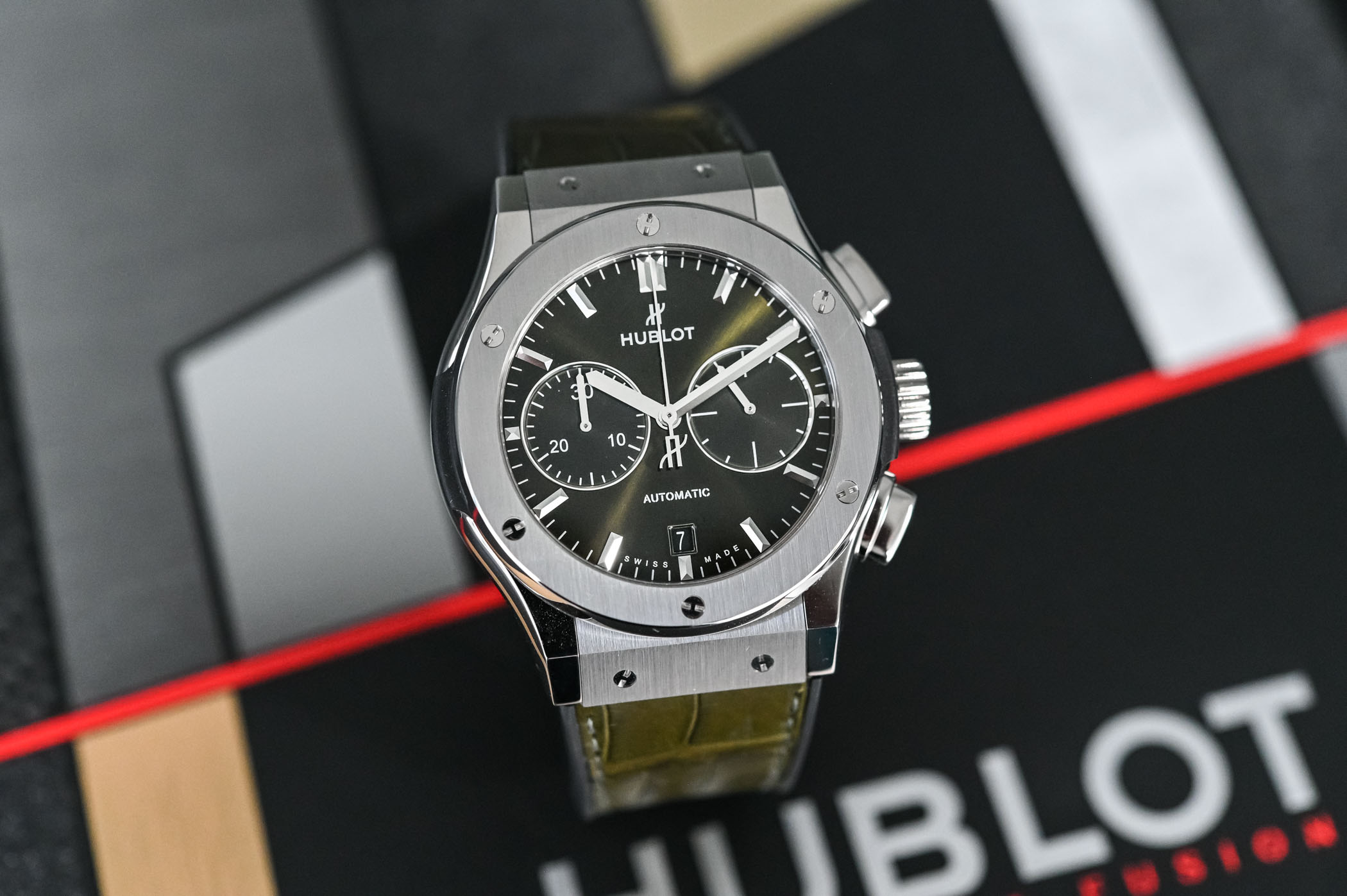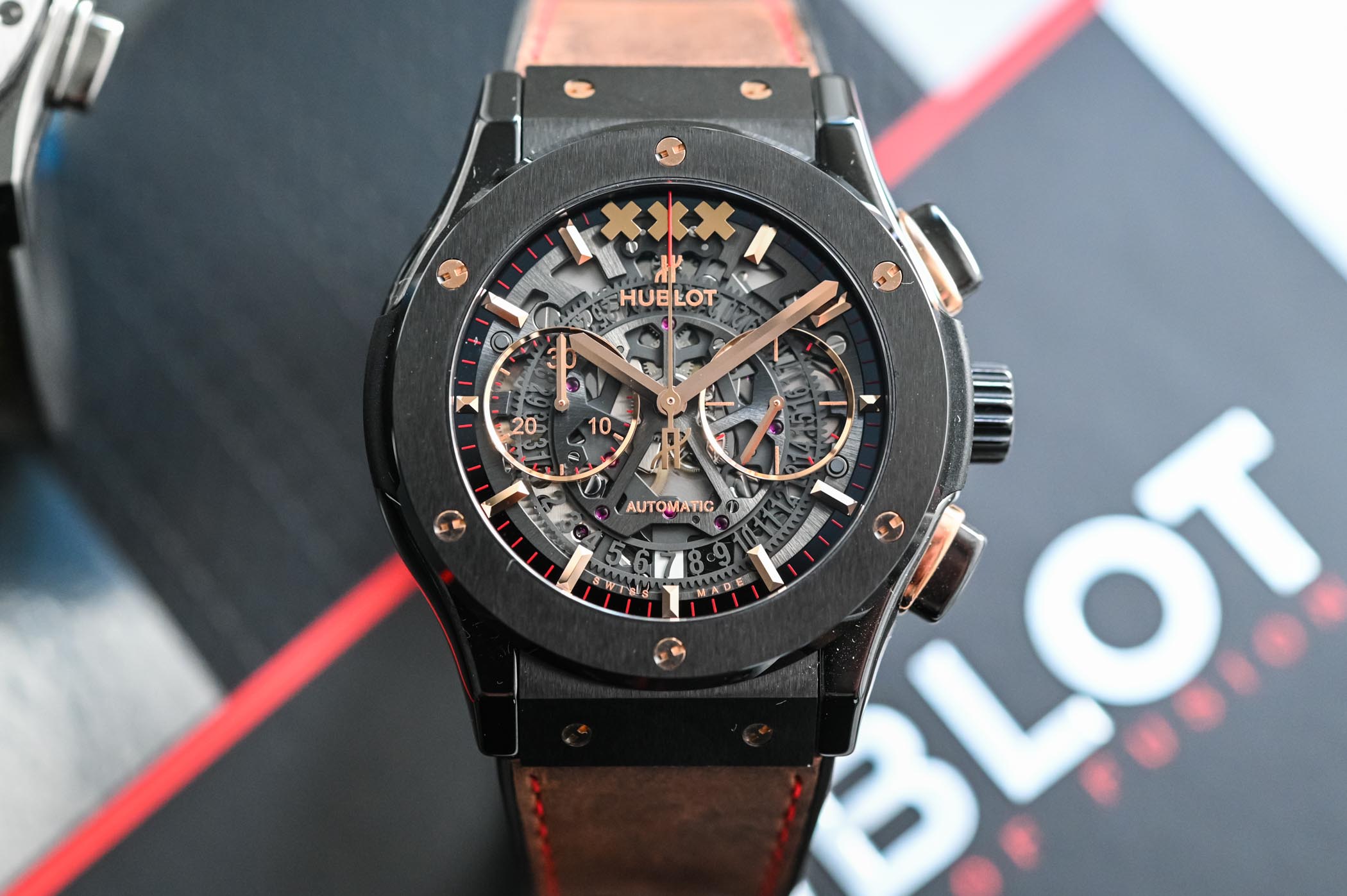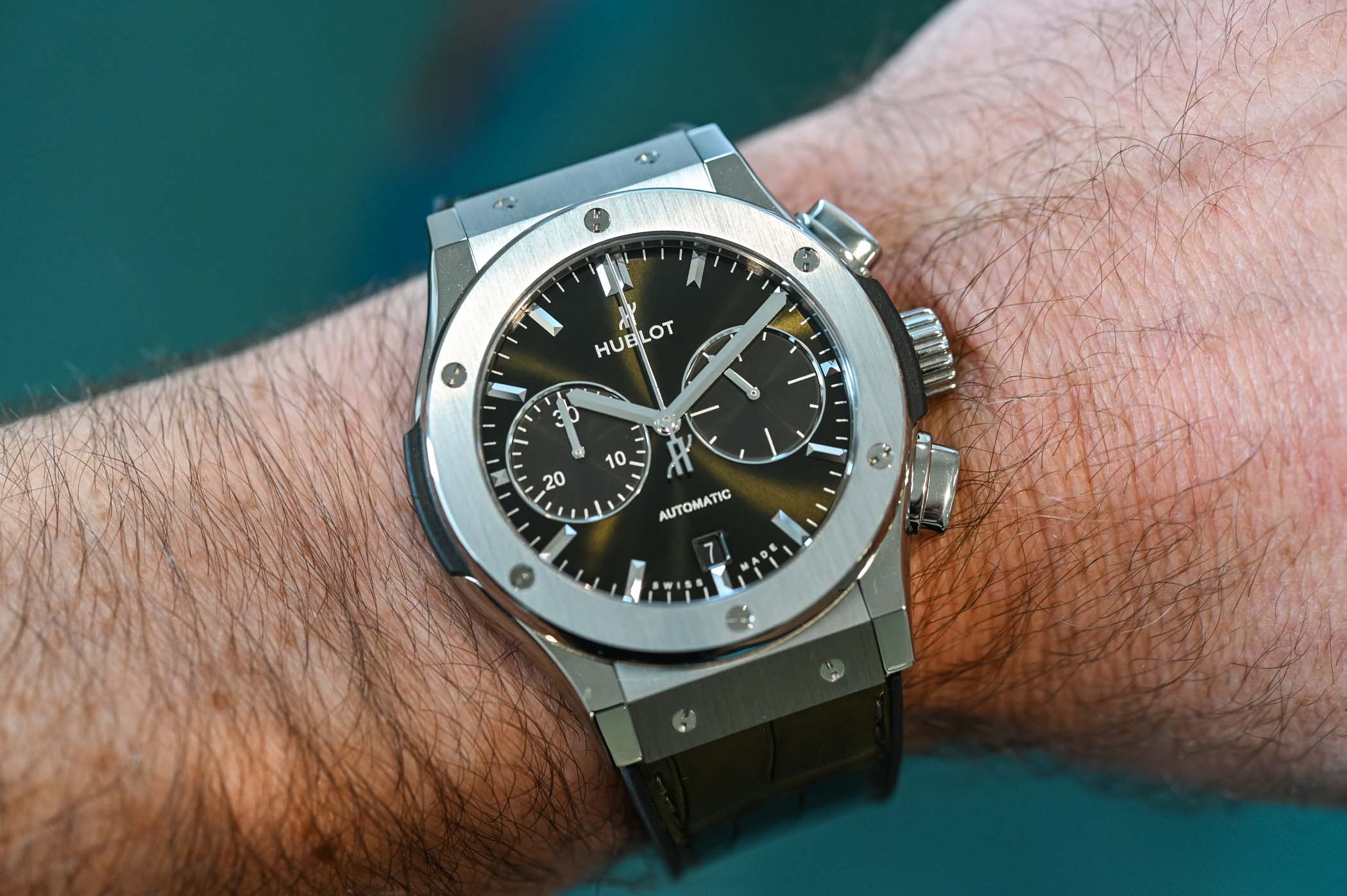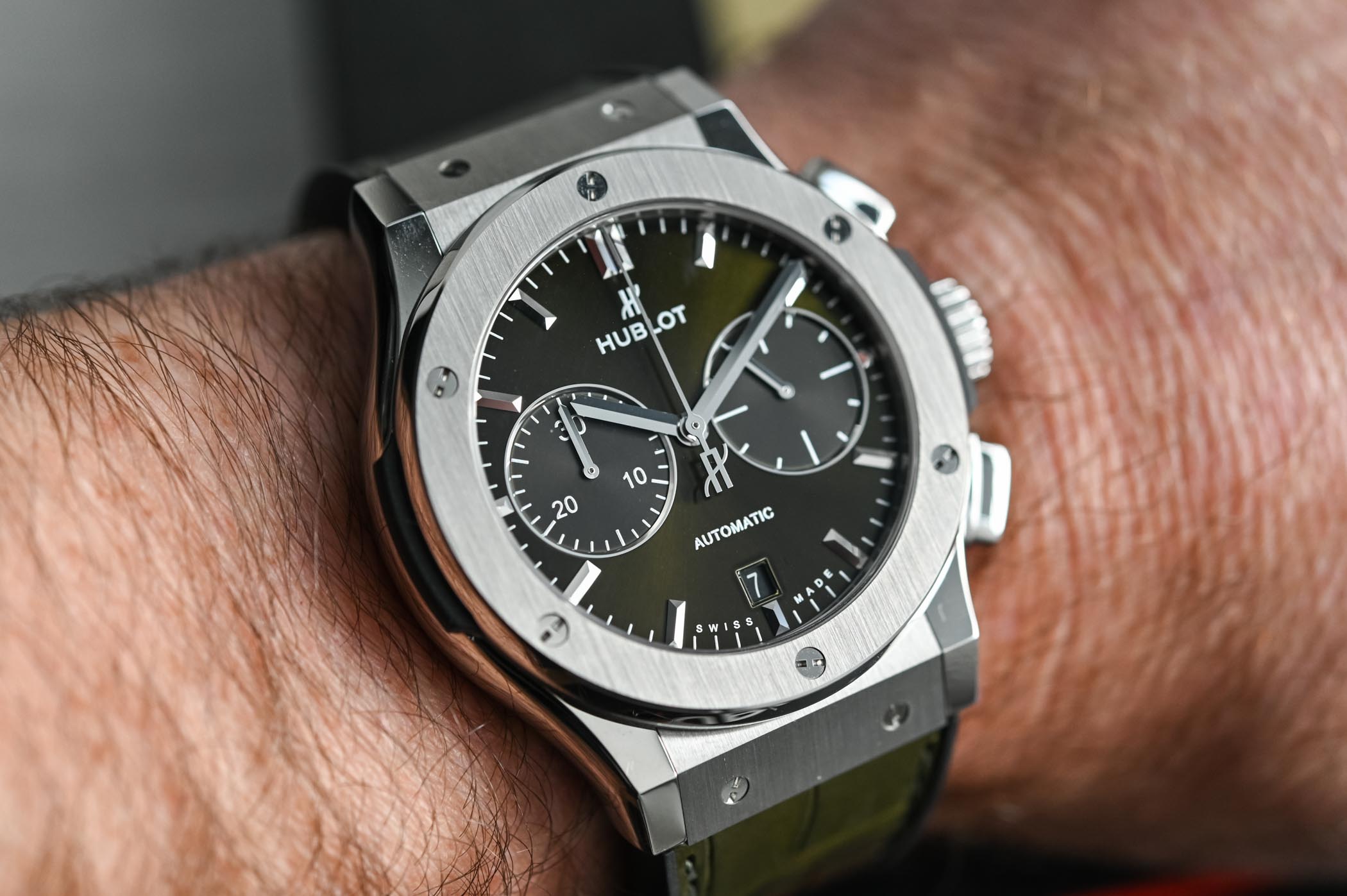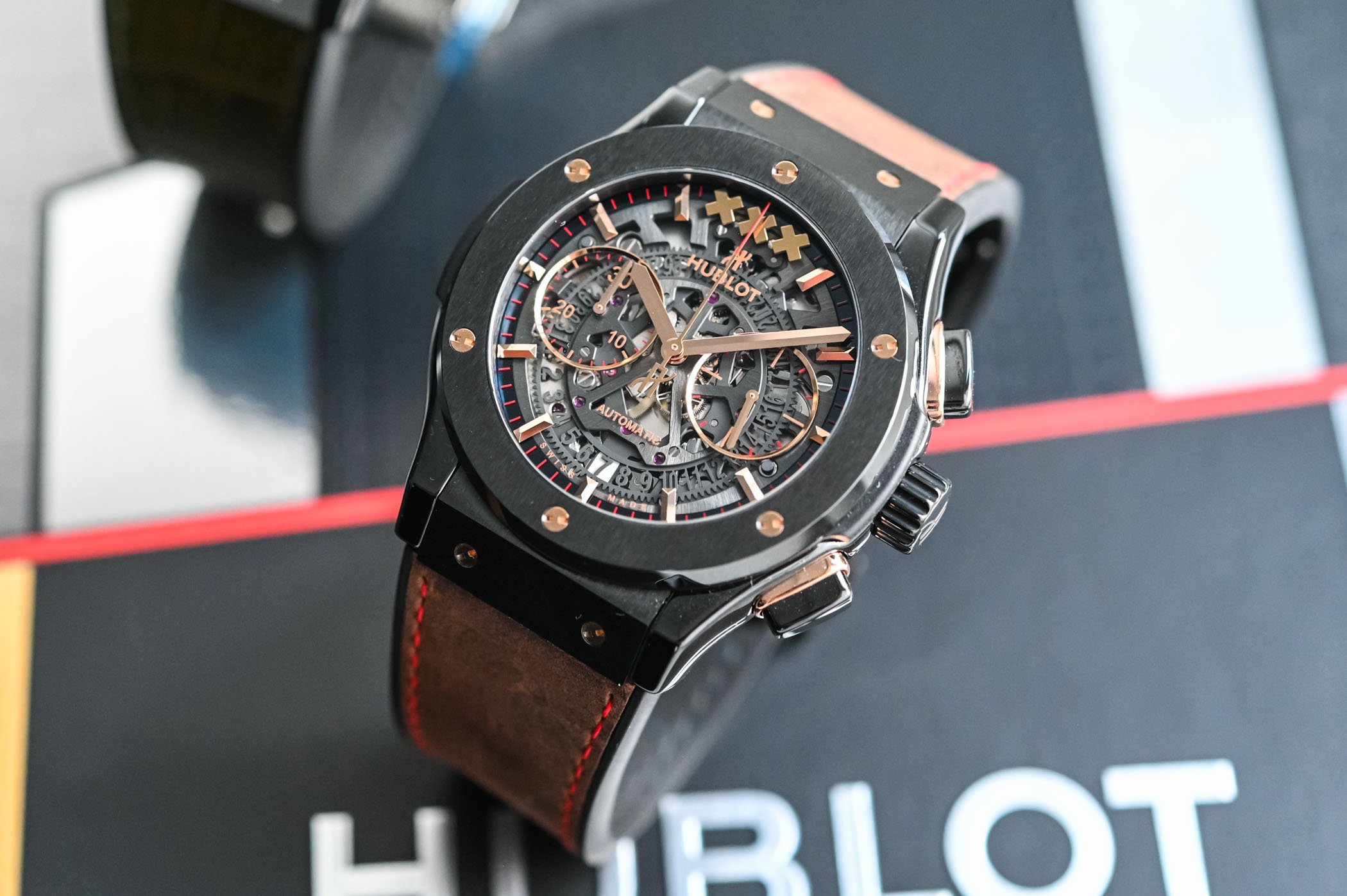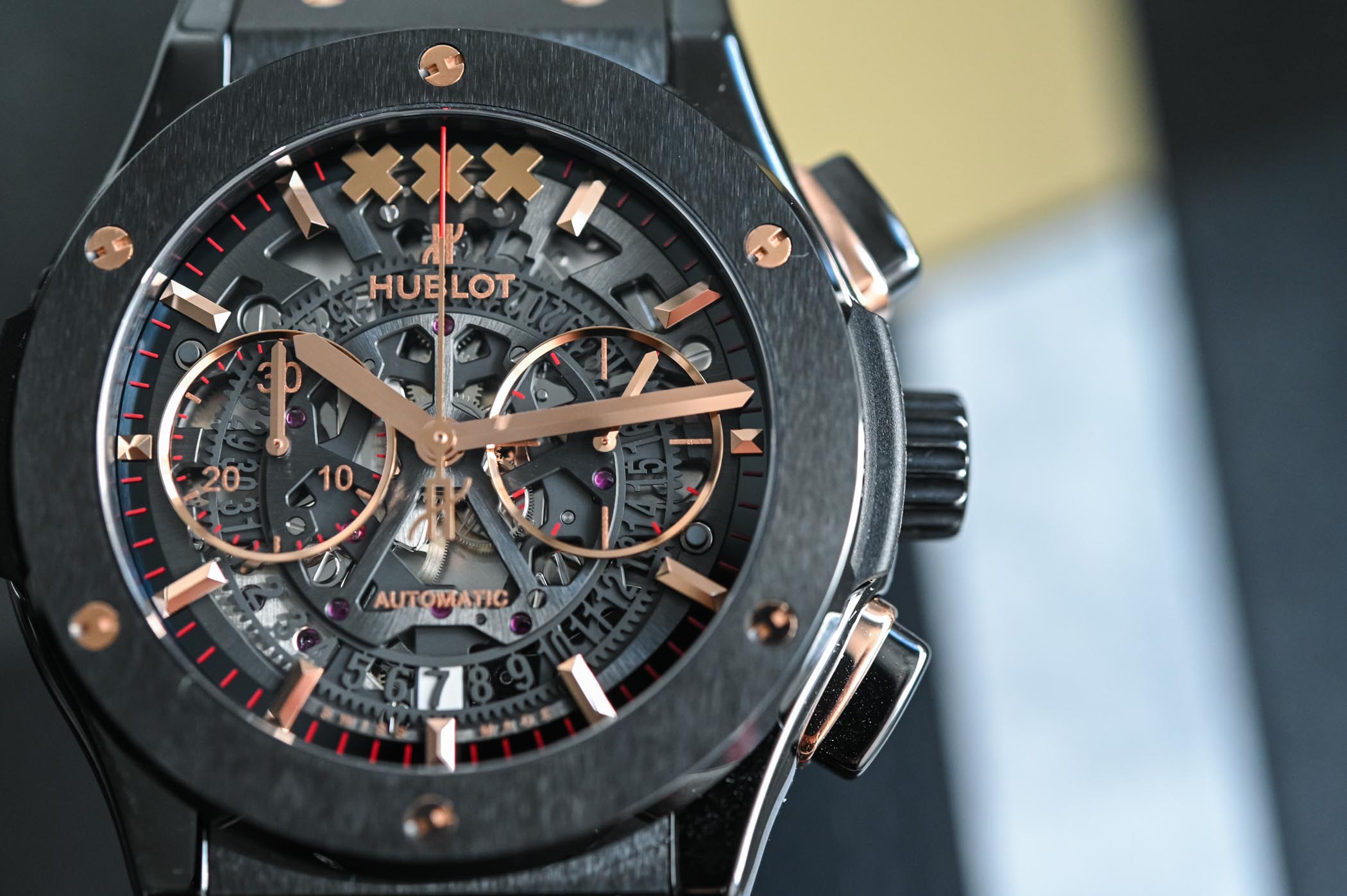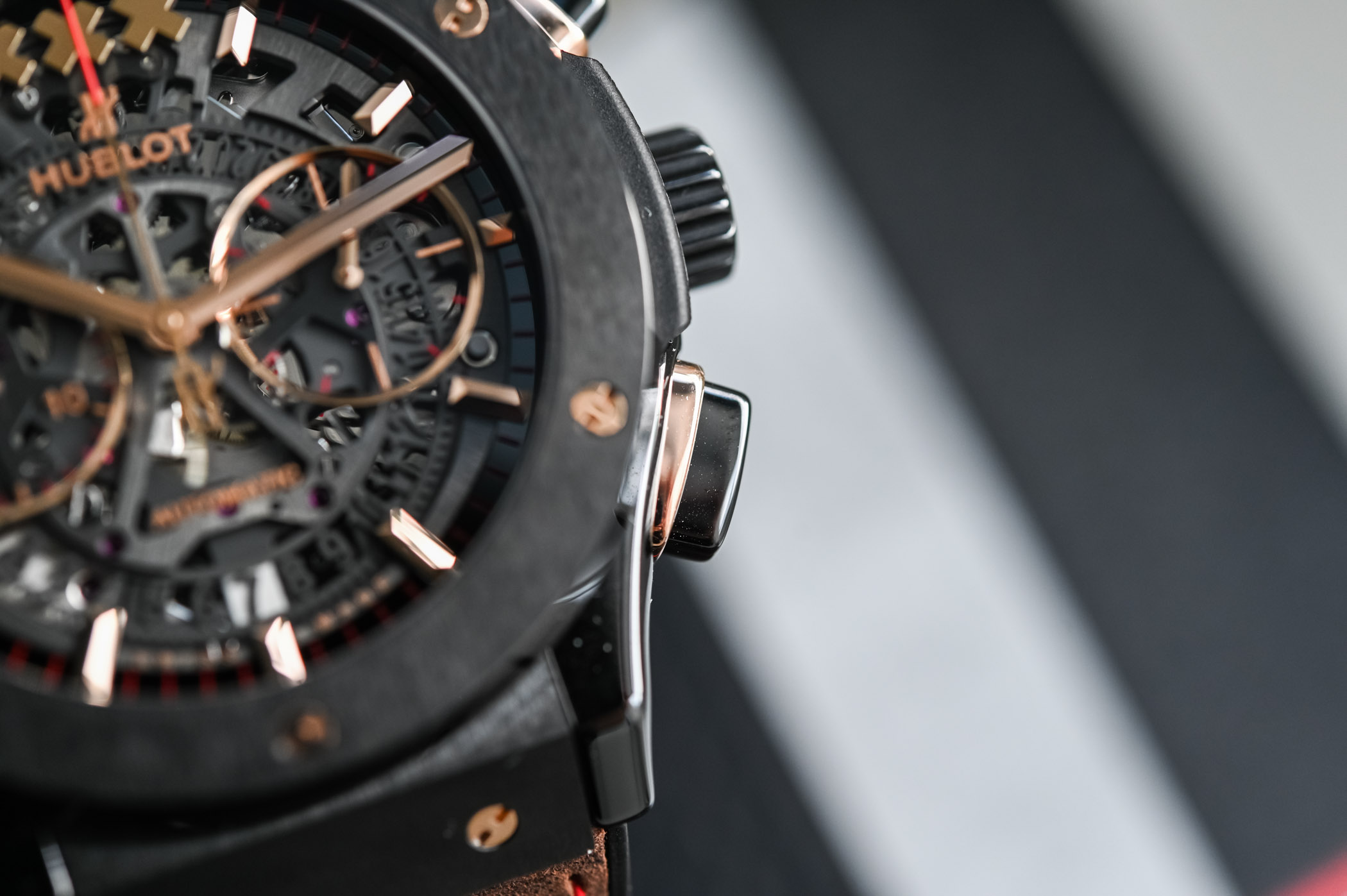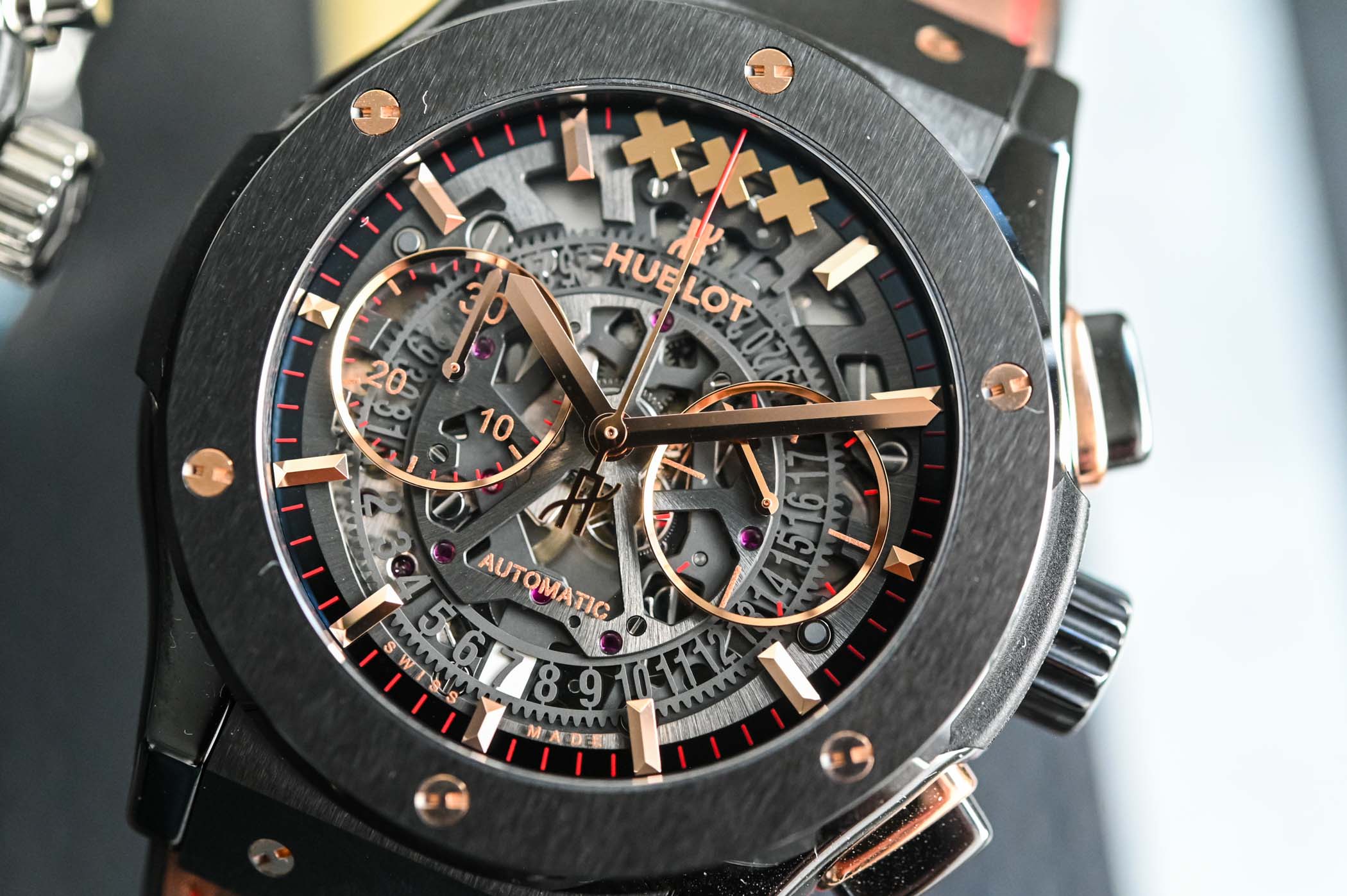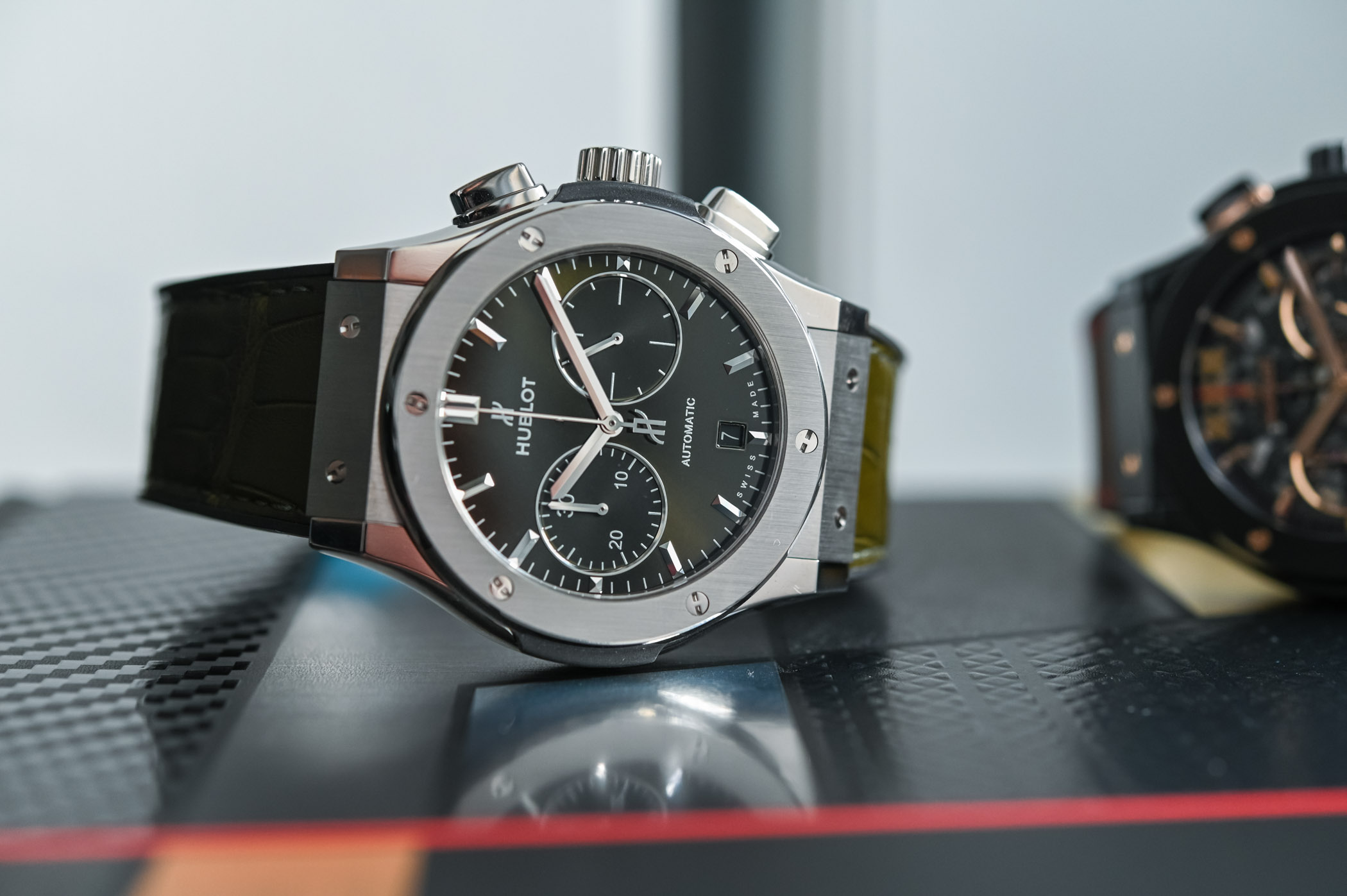Learning to Love the Power of Being Different with Two Hublot Classic Fusion Chronographs
Could Hublot watches be much more versatile than you think?
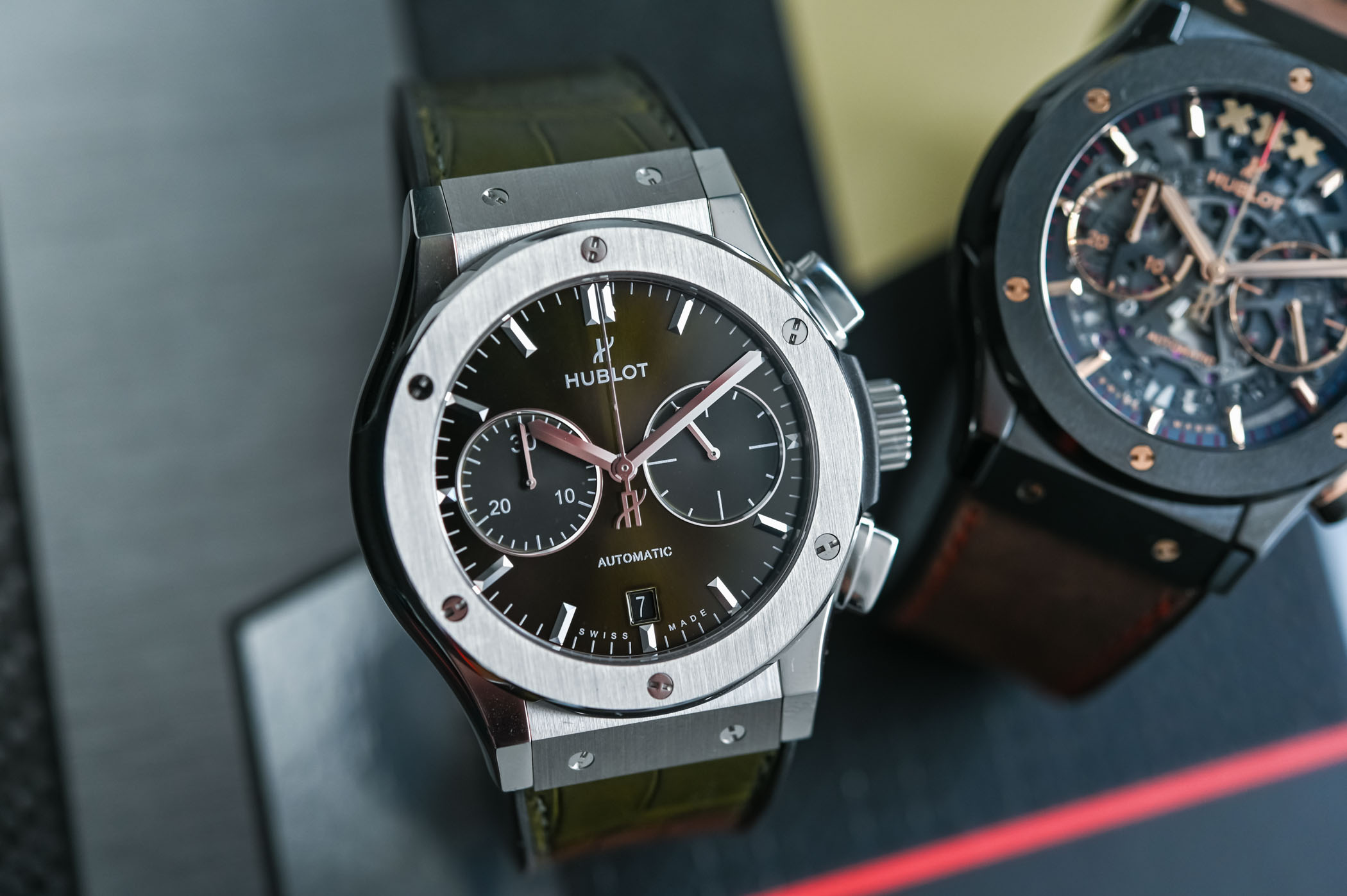
Hublot has always been disruptive. No debate, boldness is a motto there. It’s the very essence of the brand to make you either love or hate it. But all that noise overshadows the real power of the Fusion concept: its creative versatility. Let’s take a closer look at two very different watches that are actually the same, both based on the Classic Fusion Chronograph.
Every year, Dutch retailer Schaap en Citroen offers a special edition Hublot, made for the Dutch market only. And if I say Dutch, I actually mean “Amsterdam” here. The watch is called the Classic Fusion 45mm Chronograph Amsterdam Boutique Ceramic and it is a follow-up to last year’s Classic Fusion Aerofusion Chronograph Special Amsterdam Boutique Edition. And that model was preceded by a watch called the Hublot Classic Fusion Chronograph Ajax Amsterdam.
The first thing that strikes me is how long all those names actually are. Like someone tried to make a memory game out of naming Hublots. But… Whatever! The second thing is a bit more serious: this Classic Fusion chronograph comes in a lot of iterations. And a lot of them are quite funky.
Versatility rules
What to make of the Hublot Classic Fusion Chronograph? In the past years, we’ve seen an endless amount of variations, showcasing a diversity that seems unparalleled in the watch industry. There was one with a leather dial, in collaboration with Parisian shoemaker Berluti, that was pretty awesome. There was a series with fabric dials, created in collaboration with Lapo Elkann of Italia Independent, one with a concrete bezel or the Classic Fusion Titanium Green (which we will also feature in this article). Which leads us to the question… Could the Hublot Classic Fusion be the most versatile watch in the industry?
The two watches that we had on the wrist, and in front of the camera, are the Hublot Classic Fusion Chronograph (so far the name is similar) Titanium Green and Amsterdam Boutique Ceramic. The latter is actually equipped with an open-worked movement similar to the Aerofusion line within the Classic Fusion collection. And while both watches couldn’t be more different, in style and looks, in terms of specifications they are rather identical. So let’s have a closer look, first by diving into the history books.
The origins of Classic Fusion
Hublot means porthole, and the name was inspired by the original design by Italian Carlo Crocco, who came from the Binda Group, which is more famous for the brand Breil (and Wyler Geneva). In 1980, he created a watch that was completely in sync with its time, or maybe even ahead of it. It had a round bezel with screws in it (hence the porthole reference), an integrated strap and a minimalist design. But most importantly, it had a feature that made it as provocative (and initially unsuccessful) as the Royal Oak had been nearly a decade earlier.
The MDM Genève Hublot watch had a rubber strap attached to its 37mm golden case. Nowadays, you’ll see lots of luxury watches with that material, but back then it was a revolutionary concept. The name they gave it might sound like a bad restaurant description now, but it is still used by Hublot: Fusion.
In the early 2000s, Hublot switched hands. In 2004 another investor stepped in. Known as the “Marketing Pope” during earlier stints at Blancpain and Omega, Jean-Claude Biver bought a chunk of Hublot shares (20% to be precise). At a bargain, because the brand was not performing really well at that time. In 2008, the remaining shares were bought by LVMH.
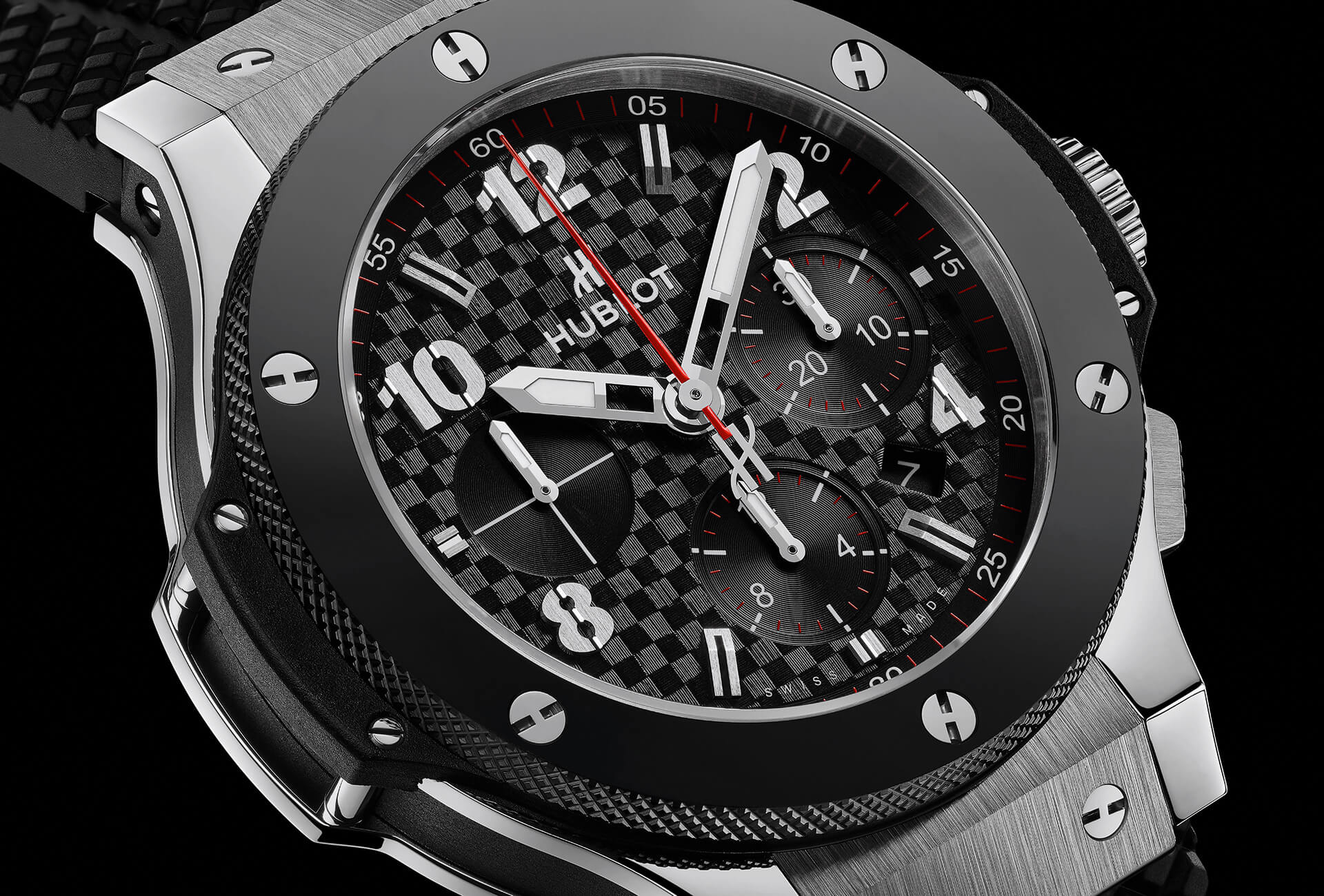
The first thing Biver did was – surprisingly – to make a Really Big Statement named the “Big Bang”. That watch was inspired by the original Hublot, and Biver knew how to make it work for him. He took the concept of fusion – the watch’s most contemporary aspect – and started experimenting with it. Think whatever you want to think about Jean-Claude Biver, but this man knows how to create a concept, and turn it into gold.
“Hublot’s main strength is our ability to innovate. A flair for thinking outside the box,” Biver once said. The concept of Fusion made it possible for Biver to make his brand disruptive. Because it wasn’t bound to traditional design codes, he basically could do whatever he wanted with it. A snake-leather dial with a titanium case? Let’s do it. Denim with rubber straps? Why not? Jump on the smartwatch-bandwagon? Let’s go! Biver created the ultimate canvas for any modernist fashion trend. That doesn’t make these watches fashion watches, though. Biver knows exactly how to make a brand premium, and keep it (and its prices) there.
Soon after he shocked the world of horology with the Big Bang, Biver introduced a slightly more toned-down watch, a model that came closer to the watches from the 1980s. That watch was the Classic Fusion.
Classic Fusion on the wrist
So, with all that in mind, let’s see what’s what on the wrist. Biver turned fusion into the philosophy of the brand and it’s perfectly illustrated in both editions featured here. At first sight, the Hublot Classic Fusion Chronograph Titanium Green is a very masculine watch. It has all the distinctive Hublot features. A bezel with 6 screws (with H-shaped screw heads), a very large (45mm) case, a fashionable colour and an integrated strap with (this is more important than you might think) screws in the bracelet-case construction. But most importantly, it features a titanium case with a rubber bracelet with a leather inlay: the kind of fusion that Hublot stands for.
The multi-component sandwich construction of the case tells the same story, combining different finishes with some brushed and some polished surfaces. The sculpted design itself combines a lot of sharp edges with that typical round porthole face. In all, the Classic Fusion Chronograph Titanium Green feels like it should: it is a luxury watch for men who are not shy of showing their success but with a more stylish appearance. And if you’re wondering, those H-shaped screws are functional: they keep the bezel in place.
The new Schaap en Citroen Classic Fusion 45mm Chronograph Amsterdam Boutique Ceramic is exactly the same watch, but completely different altogether. The brushed-and-polished case is made out of black ceramic, and the screws and pusher rims are made of gold. The fusion concept reaches all the way to the strap, which is made of rubber with a brown leather inlay and red stitching because… well, why not? The dial really is the big eye-catcher here: it is openworked and has applied golden indices. And, of course, the three Saint Andrew’s crosses refer to the flag of Amsterdam.
You might be thinking at this point: well, this is a bit much, isn’t it? Well, you could be right. Wearing it on the wrist is an event in itself. This is a watch that isn’t shy to show its luxury pedigree. And that’s obviously the idea behind it. Like all previous Schaap en Citroen special editions, co-owner Dennis Martens of the leading jewellery chain always adds a unique Amsterdam twist to the pieces that give the piece its desirability. In this case, it’s the black-brown-gold combination, and in the previous special edition, it was the bronze case with a black leather strap with red stitching.
Movement wise, the watches are quite similar as well. The HUB1143 calibre is built on an ETA 2892-A2 base with Dubois-Depraz chronograph module. The result is an automatic chronograph movement which beats at a frequency of 28,800 vibrations per hour. It has a power reserve of 42 hours and a date window.
Big Personality, Big Prices
On the wrist, both watches immediately show their unabashed masculinity. The Amsterdam edition is bold and luxurious, the Green Titanium is slightly more understated and stylish. Both watches really do what they’re designed for: to radiate modern luxury. And both watches are distinctly different in their execution.
To me, 45mm is just too big on the wrist, but I can see the appeal of these watches. They’re like that energetic guy in your office who comes in on Monday morning with flash outfits full of stories about last weekend. They set the tone of the conversation. They’re so expressive, you either love or hate them.
The Hublot Classic Fusion 45mm Chronograph Amsterdam Boutique Ceramic costs EUR 18,700 and comes in a limited edition of 20 pieces. It’s exclusively retailed at Schaap en Citroen. The Classic Fusion 45mm Chronograph Titanium Green is available worldwide in an unlimited edition and will set you back EUR 10,700.
For more information, visit www.schaapcitroen.nl and www.hublot.com.


